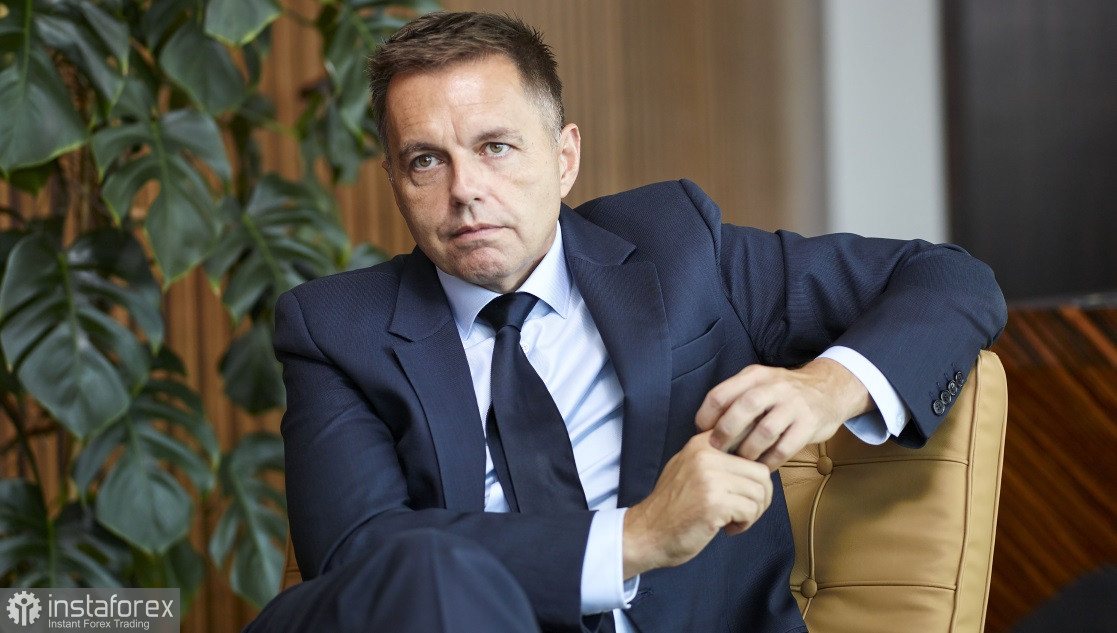Against the background of recent conversations and statements made by representatives of the European Central Bank last week, several economists believe that the regulator will raise interest rates three times this year to suppress inflation. A Bloomberg survey says that the Board of Governors will raise the deposit rate by a quarter-point in July this year, then in September, and once in December - bringing it to 0.25% by the end of the year. The key interest rate will be raised in September and December to 0.5% from zero, where it is currently.
In an earlier survey of economists, expectations were more modest: the calculation was for only one increase of one-quarter point this year. Also, according to forecasts, the eurozone economy will continue to grow this year, even despite the increase in problems due to Russia's military special operation on the territory of Ukraine. Currently, growth is expected to be 2.8% and 2.3% in 2022 and 2023.
As for inflation, according to economists, it will be 6.7% this year and 2.6% next, and only in 2024, the growth of consumer prices will slow down to 1.9% - below the target level of the European Central Bank.
Last week, several officials from the ECB confirmed the regulator's plans for this year. According to Gabriel Makhlouf, a member of the Governing Council, the European Central Bank is likely to raise interest rates above zero by the beginning of 2023 to start seriously fighting record inflation in the eurozone. Thus, the Irish official joined a growing group in the ECB Governing Council that proposed to stop net bond purchases as early as June - the first step that will be evidence of the real beginning of the ECB's interest rate hike cycle after keeping it at zero for more than a decade. "It is realistic to expect that the first change in ECB interest rates will occur shortly after the completion of the purchase of net assets and that rates are likely to be in the black by the beginning of next year," Makhlouf said in his speech.
Around the same time, another member of the Board of Governors, Peter Kazimir, became the last politician to declare his support for the July rate hike. "The possibility of adverse effects of our non-standard measures on the functioning of the market was assessed as the ECB's balance sheet grew, and a similar assessment will be equally important when its size decreases. The disinflationary dynamics that the eurozone has experienced over the past decade are unlikely to return. Now we have reached the point where we need to act," Peter Kazimir said.
The need for more active actions is dictated not only by high inflationary pressure but also by the actions of other central banks aimed at a more aggressive tightening of monetary policy. At the end of last week, Federal Reserve Chairman Jerome Powell warned that controlling inflation could cause some economic problems and that he could no longer promise a so-called soft landing of the economy since the Fed needs to continue to actively raise interest rates to combat rising prices. Let me remind you that this month the Fed approved an interest rate increase of half a percent after a quarter-point increase in March. Already, the markets expect that the Federal Open Market Committee will raise them by another half-point in June and continue to raise base rates until the end of the year.
The slight correction of the euro at the end of last week and the beginning of this week is not surprising, since there are no "active" reasons for increasing short positions yet. But it should be understood that the demand for risky assets during the period of the aggressive policy of the Federal Reserve System is quite low, which is confirmed by the technical picture. At the moment, the EURUSD pair has tried to compensate for losses, and nothing more. In the short term, it is best to bet on the nearest support of 1.0400. To stop the bear market, buyers need to protect this level. If you miss it, most likely the bears will fail the trading instrument by the new annual lows of 1.0350 and 1.0290. It is possible to talk about a correction of the euro, but first, the bulls need to get above 1.0440. Only after that, they will aim for a breakout of 1.0480. From there, the road is expected to go up to 1.0530 and 1.0580.
Buyers of the pound have recently defended 1.2220, but this may be a temporary phenomenon since real hints of the Bank of England suspending the interest rate hike program will lead to another major sell-off of the pound. In the short term, buyers will probably continue to defend 1.2220. Going beyond 1.2290 will strengthen the upward correction. However, at each growth, I still advise selling the pound further along with the trend. A breakthrough of 1.2290 will lead to an instant breakthrough of the trading instrument at 1.2340 and 1.2395. A breakout of 1.2220 will strengthen the bear market, which will open the way to new lows: 1.2160 and 1.2070. The farthest goal in the current conditions will be the support of 1.2030, which will be updated in case of deterioration of the UK economy very quickly.
 English
English 
 Русский
Русский Bahasa Indonesia
Bahasa Indonesia Bahasa Malay
Bahasa Malay ไทย
ไทย Español
Español Deutsch
Deutsch Български
Български Français
Français Tiếng Việt
Tiếng Việt 中文
中文 বাংলা
বাংলা हिन्दी
हिन्दी Čeština
Čeština Українська
Українська Română
Română

